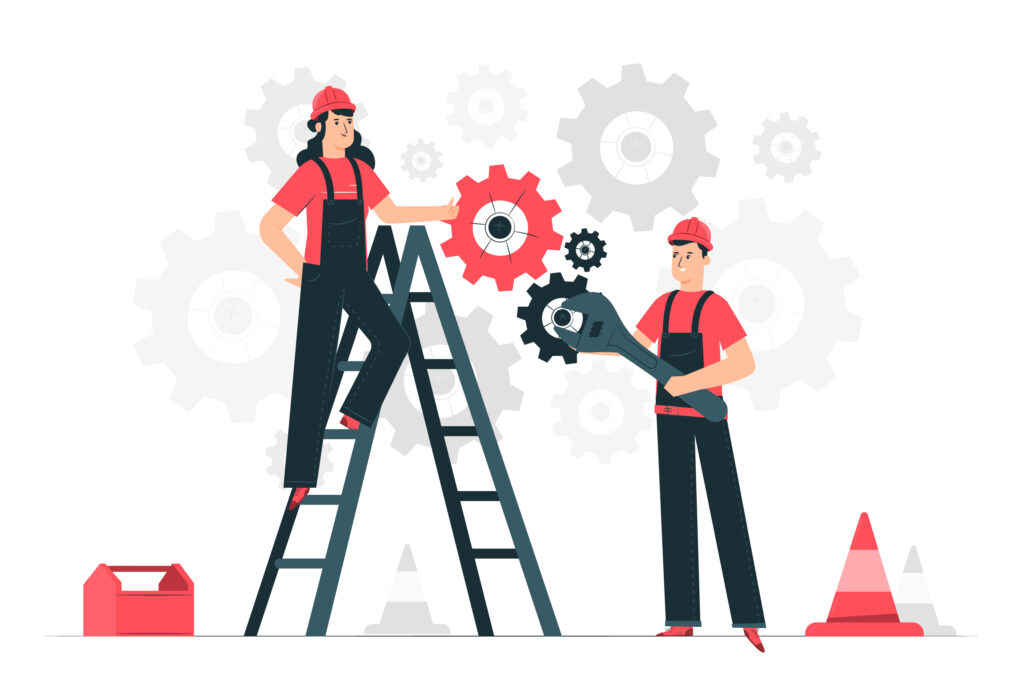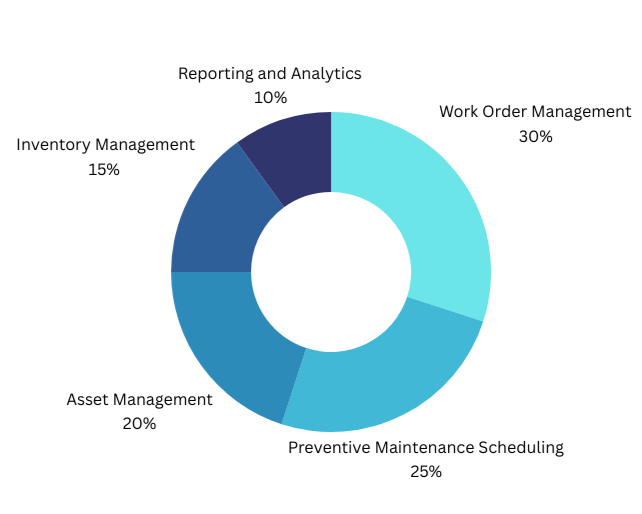According to Gartner, the Maintenance Management System (MMS) market will grow 15% annually by 2025, driven by IoT and AI. McKinsey predicts predictive maintenance will cut downtime by 20-50%, while Deloitte notes 60% of manufacturers will use advanced analytics for efficiency. The World Economic Forum highlights a 40% rise in cloud-based CMMS adoption, enabling remote monitoring and cost savings.

What Is Maintenance Management System?
A maintenance management system (MMS) is software that organizes and automates maintenance tasks. It helps businesses manage assets, track work orders, schedule preventive maintenance, reduce downtime, and extend equipment life, improving overall productivity and efficiency.
Why Maintenance Management System Important?
Efficient maintenance management is very important to maintain operations without any interruptions. Here are some of the most important reasons:
- Minimizing Downtime: Regular maintenance prevents unexpected equipment failures.
- Improving Asset Longevity: Proper scheduling and tracking extend the life of assets.
- Saving Costs: Breakdowns minimize repair costs and replacement expenses.
- Safety: Properly maintained equipment reduces workplace hazards.
- Data-Driven Decisions: Real-time insights enable better planning and resource allocation.
Key Features of a Maintenance Management System
An effective maintenance management system provides several features that cater to various business needs. These include:
- Work Order Management: Efficiently create, assign, and track work orders for maintenance tasks. This feature ensures clear communication between teams.
- Asset Management: Keep detailed records of all assets, including equipment history, warranty details, and performance data.
- Preventive Maintenance Scheduling: Automate maintenance schedules to avoid equipment breakdowns and ensure consistent performance.
- Inventory Management: Track spare parts and inventory levels to avoid repair delays.
- Reporting and Analytics: Gain insights into maintenance trends, costs, and performance metrics with real-time reporting tools.
Importance of Maintenance Management System

Types of Maintenance Strategies
1. Reactive Maintenance
Also called “run-to-failure” maintenance, this strategy provides proper equipment reparation only after it has broken down. Even though it appears cheaper at first, it typically results in increased repair costs and lost productivity.
2. Preventive Maintenance
Preventive maintenance strategies schedule periodic inspections and servicing to prevent equipment failure. It is the core characteristic of most maintenance management systems.
3. Predictive Maintenance
Using advanced technologies such as IoT sensors, predictive maintenance monitors the condition of equipment in real time to predict potential issues before they occur.
Benefits of Maintenance Management System
- Increased Productivity: The automation of scheduling tasks and workflow also increases operational efficiency.
- Reduced Downtime: Maintenance is proactive, thus avoiding unexpected breakdowns of equipment that would result in downtime.
- Extended Asset Life: Assets are made to work optimally for a more extended period with regular maintenance.
- Resource Optimization: Organizations can use real-time data to allocate resources better.
- Compliance and Safety: A maintenance management system helps an organization meet the set standards and has a safer workplace.
How to Choose the Right Maintenance Management System
- Business Needs: Identify your organization’s specific maintenance requirements. Do you need asset tracking, inventory management, or robust reporting tools?
- Scalability: Ensure the system can grow with your business and accommodate future needs.
- User-Friendliness: A simple and intuitive interface ensures faster adoption by your team.
- Integration Capabilities: Choose a system that integrates seamlessly with your existing software, such as ERP or CRM tools.
- Cost and ROI: Consider the upfront cost and long-term return on investment. A maintenance management system should provide measurable value.
Implementation Practices for Maintenance Management System

- Set Clear Goals: Define what you aim to achieve with the system, such as reducing downtime or improving efficiency.
- Involve Your Team: Engage your maintenance and IT teams during the selection and implementation process.
- Train Employees: Provide thorough training to ensure your team can use the system effectively.
- Start Small: Implement the system in one department or location before rolling it out across the organization.
- Monitor and Optimize: Regularly review the system’s performance and make necessary adjustments to improve its effectiveness.
Trends in Maintenance Management Systems
- IoT and Predictive Analytics: IoT sensors and devices capture real-time information, thus ensuring predictive maintenance.
- AI-Driven Systems: Artificial intelligence determines the optimal time for maintenance of equipment and traces the patterns associated with its working.
- Mobile and Cloud-Based Solutions: Cloud-based MMS can provide remote access in large numbers, while mobile apps allow tasks to be updated online.
- Sustainability Focus: Many systems also possess features that facilitate energy efficiency as well as greener ways.
Challenges of Using a Maintenance Management System
- Initial Costs: Implementing a new system can involve significant upfront investment.
- Employee Resistance: Some employees may resist adopting new technology, requiring additional training and support.
- Integration Issues: Integrating the MMS with existing systems can be complex and time-consuming.
- Data Management: Maintaining accurate and up-to-date data is critical for the system’s success.
Conclusion
A maintenance management system is the best tool a business needs to ensure improvements in efficiency of operation, downtime reduction, and longer lifecycles for its assets. It helps in maintaining operations effectively by incorporating the correct MMS, followed by proper practices that may guarantee success for long-term success. Advances in technology like IoT and AI continue to make MMSs powerful and more vital than ever before. Thus, choosing the right system to suit business needs will set up your company for growth and sustainability.
